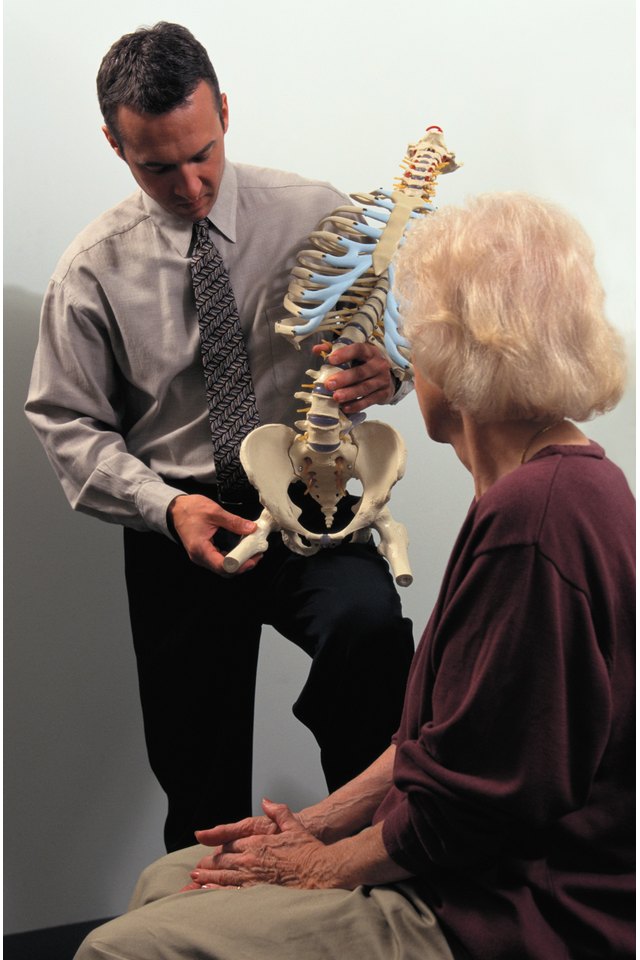Exercises for Upslips

Orthopedic specialists use the term "upslip" to describe a problem with the level of the hips. An upslip occurs when the hipbone sits higher on one side. A raised hip causes the leg on that side to appear shorter than the other. Unbalanced muscle strength and spasm may cause misaligned hips. A routine of stretching and strengthening exercises firms the weak muscles and relaxes the tight muscles. Specific exercises help correct an upslip.
Table-Lying Exercise
Stand perpendicular to a hip-height table. Bend forward and lie on the table on your stomach, resting your healthy leg on the floor for balance. Place both hands on the table under your shoulders. Slowly push your upper body away from the table. Keep your stomach and leg relaxed on the table. Hold for 15 to 20 seconds. Repeat three times. This stretch releases the muscles in the front of your hip, allowing it to drop and realign with the other side.
Side-Lying Exercise
Lie on the floor on your side, affected hip down. Keep your legs straight and knees and ankles together. With both hands on the floor in front of your chest, push up to straighten your arms. Hold for 15 to 20 seconds. Repeat three times. This movement stretches the muscle that connects the pelvis to the lower back. Relaxing this muscle helps lower the hip to its natural position.
Back-Lying Exercise
Lie on your back on the floor. Bend the knee of the hip with the upslip. Bring the bent knee toward your chest with your hands. Maintain level hips. If the hip on the side of the straight leg begins to lift from the floor, increase the distance between the bent knee and your chest. Hold for 30 to 60 seconds. Repeat three times. Reducing the tension in the muscles that connect the back of the hip to the spine helps correct the upslip and reduces hip pain.
Balance-Ball Exercise
Strengthening both hips equally as part of the body's core rehabilitates an upslip and protects your hips and pelvis from further muscle imbalances. To strengthen your core, place the flat side of a half exercise ball on the floor. Place the half ball close to a wall if you need to rest a hand on the wall for balance. Step onto the half ball. Slowly march your legs while maintaining your balance. Repeat 12 to 15 steps with each leg.
References
- Foundations of Osteopathic Medicine: Anthony Chila
- Manual Therapy Masterclasses: The Vertebral Column: Karen Beeton
- Hatha Yoga Illustrated: Martin Kirk, et al.
- Stretching Anatomy: Arnold G. Nelson, et al.
Writer Bio
Erika McAuley is a freelance writer from Abbotsford, British Columbia. As an exercise rehabilitation professional, she has been preventing and treating musculoskeletal injuries in athletes and civil workers since 2008. McAuley holds a Bachelor of Human Kinetics in athletic therapy from Trinity Western University and an Advanced Certificate in Athletic Therapy from Mount Royal University.
